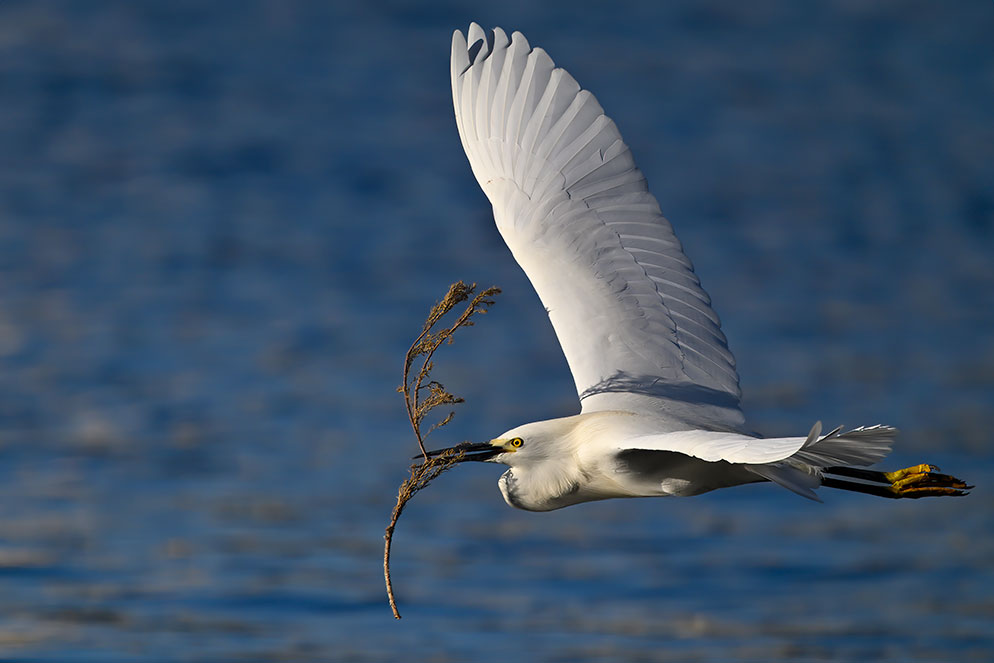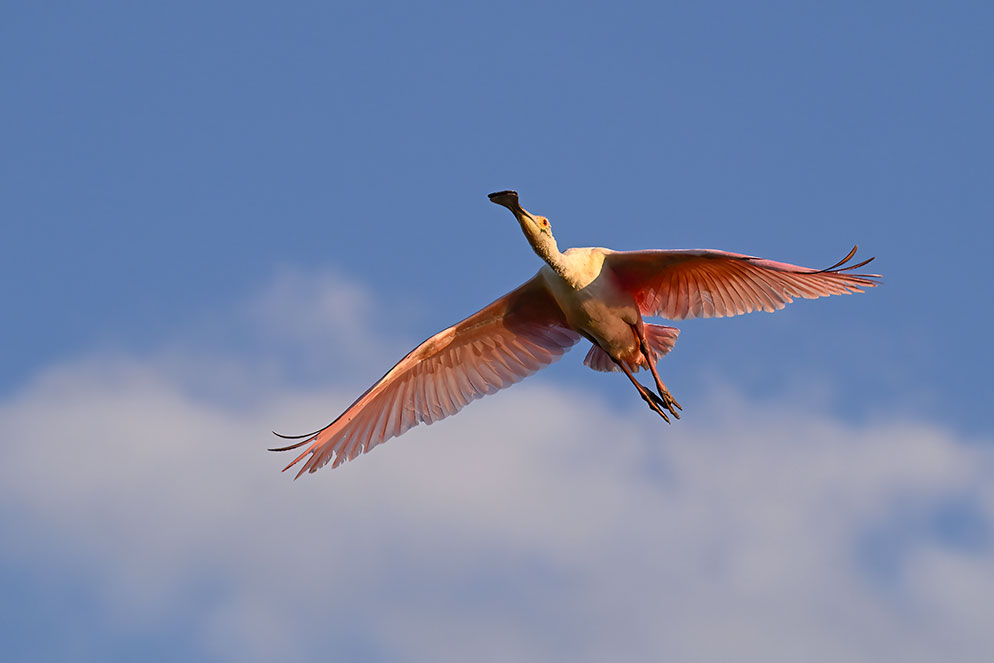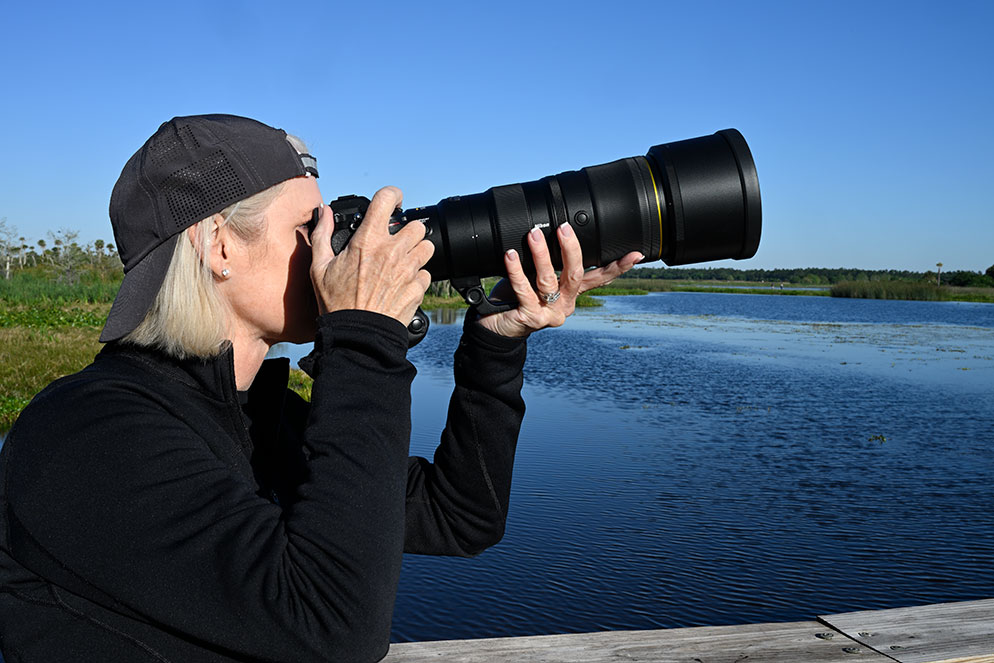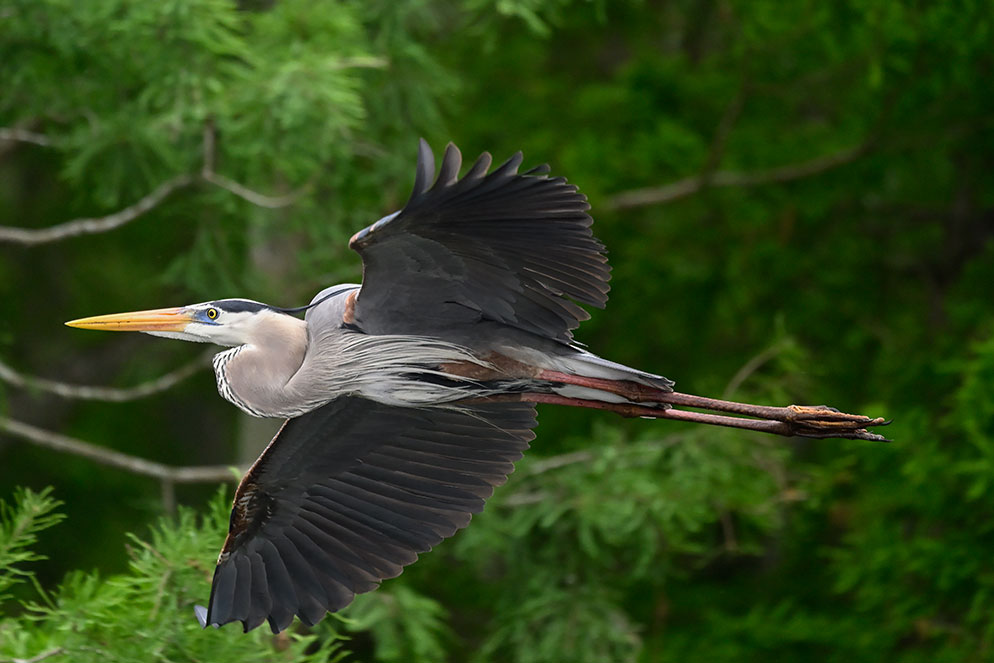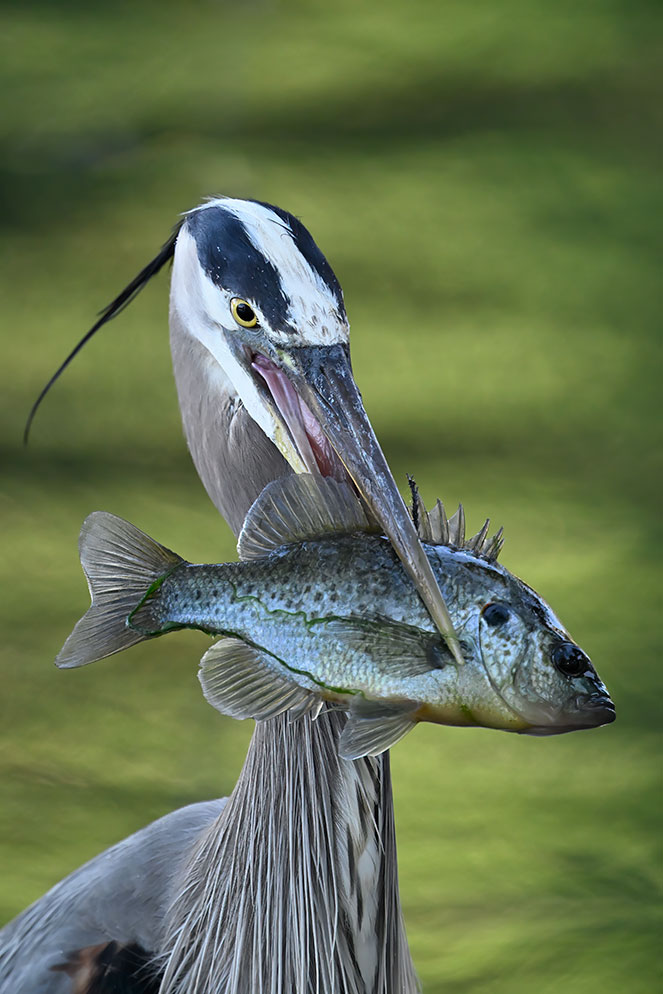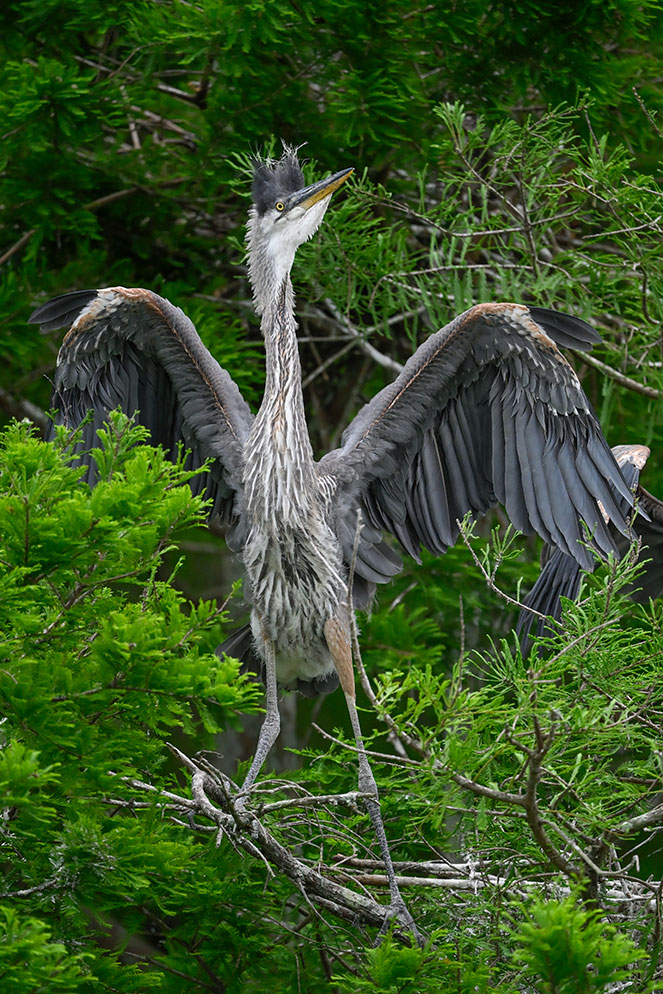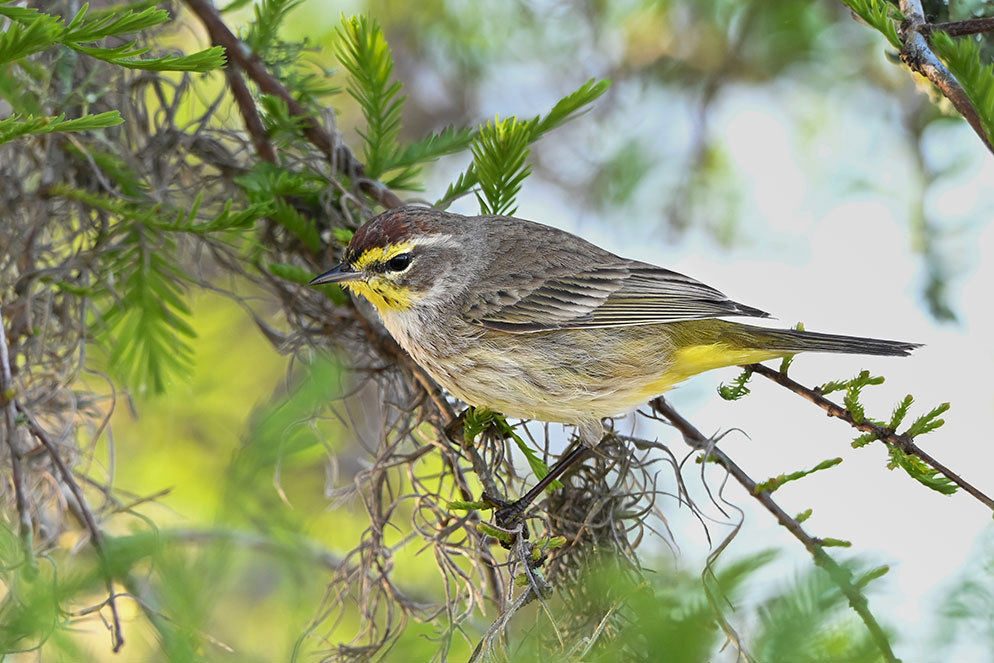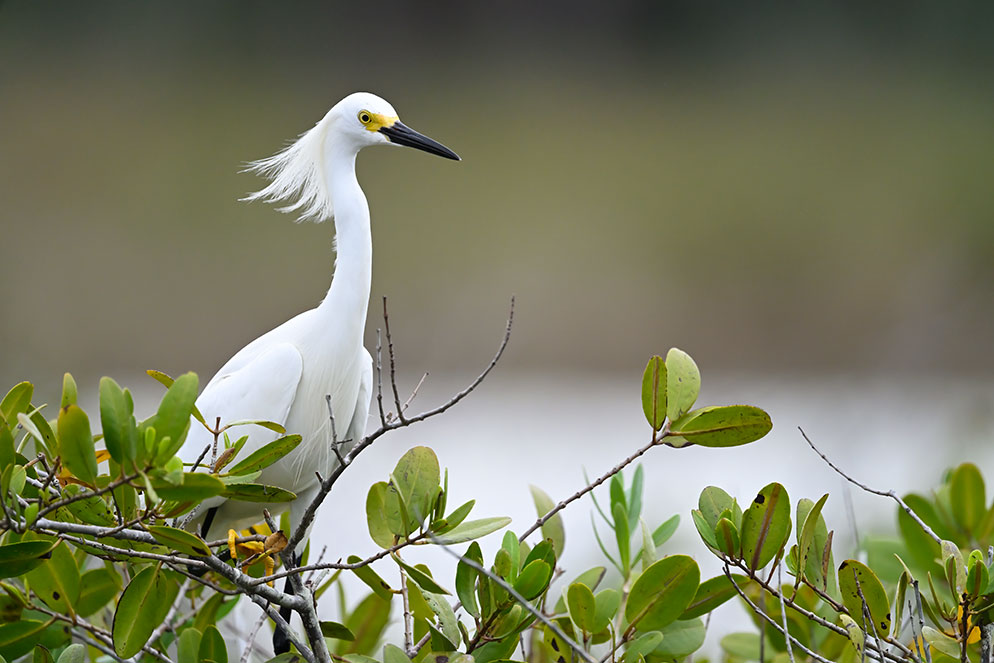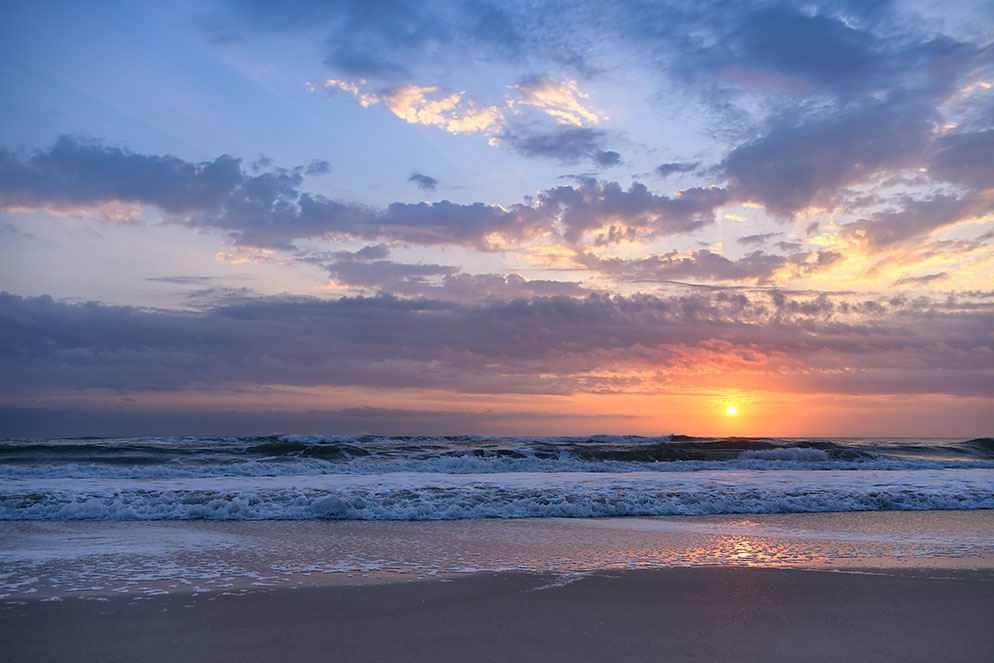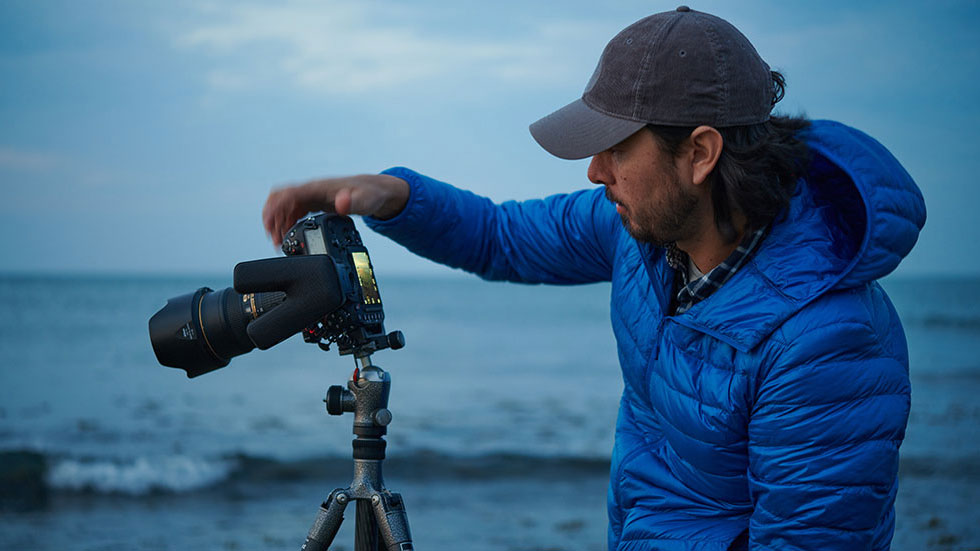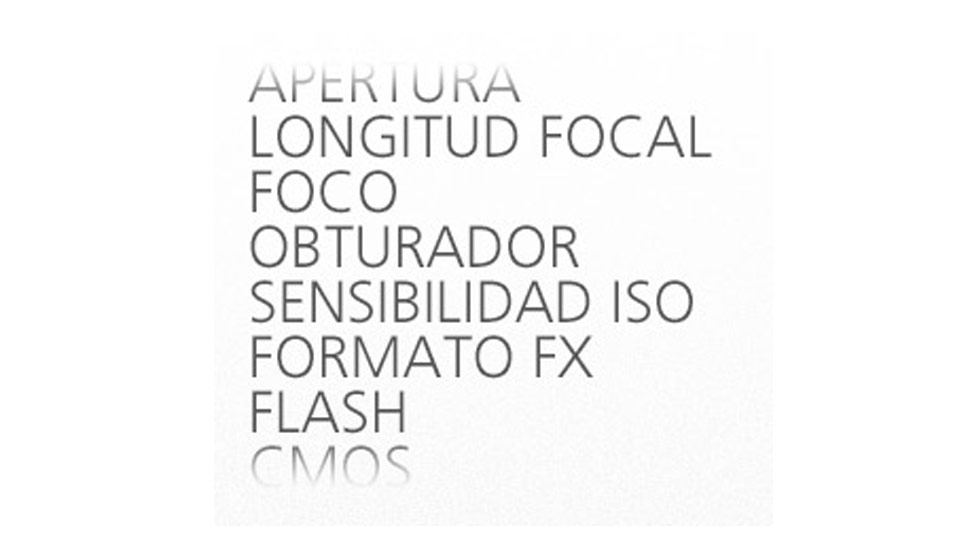The Big Reveal: A High-Speed Hybrid With Breakthrough Slow-Motion Capability, the Z6III Is a Creative Powerhouse
Deborah Sandidge talks about making a connection to her subjects and how specific features of the Z6III make it possible for her to tell a story of beauty and discovery.
Nikon Ambassador Deborah Sandidge was intrigued by the idea of being able to photograph a very familiar subject in a very different way. Her frequent subject is birds, and she’s comfortable creating still images and video of them in the wild as well as her own backyard. The Z6III, however, offered up something entirely new: seeing them in slow motion at 240 frames per second.
Deb, who typically shoots slow motion at 120 fps, immediately got the significance of the difference. “There are motions, turns, reactions that happen in fractions of a second that you never see with your eyes,” she says. “There’s no way to normally perceive or experience those moments. The beauty of 240 frames per second is that you’re revealing incredible details you could never see before.”
Sandpipers at the Nature Center at Merritt Island, Florida. “A gray, overcast day gives it a monochromatic look,” Deb says. “I loved the collective action—all of a sudden, they’d just pick up into the sky, and they are so fast!” Z6III, NIKKOR Z 180-600mm f/5.6-6.3 VR, 1/8000 second, f/5.6, ISO 3200, aperture-priority exposure.
Deb also quickly realized that the Z6III wasn’t an upgrade. It had its own features and capabilities, its own identity. “The Z6III is far beyond an upgrade—it’s in its own realm.”
Spoonbills, Deb says, are “sort of goofy,” but they’re among her favorite birds. “I was intrigued by this one’s position in relation to the clouds, and by the beautiful golden light. I photographed one recently that for some reason turned upside down. Birds can fly upside down? That was unexpected.” Z6III, NIKKOR Z 180-600mm f/5.6-6.3 VR, Z Teleconverter TC-1.4x, 1/3200 second, f/8, ISO 2000, aperture-priority exposure.
Deborah Sandidge with the Z6III and NIKKOR Z 800mm f/6.3 VR S, tracking an osprey flying over a central Florida wetlands. Deb considers the Z6III, at just over 1.6 pounds, a light-weight camera, and the Z6III-800mm combination eminently hand-holdable.
Photo by Randy Baker.
Versatility Plus
In addition to its video capabilities, the 24.5-megapixel Z6III is a remarkable camera for fast-action still photography. It’ll handle low- and changing-light conditions with ease, and its incredibly fast autofocus makes it ideal for wildlife.
A major surprise was the camera’s startlingly bright electronic viewfinder. “The viewfinder is how you make decisions because it’s really how you’re able to reference what’s happening,” Deb says. “I could see so clearly what was going on, and what works and doesn’t work in the frame—I saw it instantly, everything clear and bright, and I could make adjustments based on that view.”
“At the time of year I took this, great blue herons are busy flying, gathering nesting material. This was hand-held, panning with him.” The image is an example of a secondary benefit of f/7.1, f/8 and f/9 stops: to give the background a sense-of-place definition. Z6III, NIKKOR Z 800mm f/6.3 VR S, 1/2000 second, f/7.1, ISO 8000, aperture-priority exposure.
The Z6III far beyond an upgrade—it’s in its own realm.
A great egret on a nest material-gathering mission. “Bird photography is a shoot-early-morning and late-afternoon activity. Nest-gathering is a different story—it’s constant.” Z6III, NIKKOR Z 800mm f/6.3 VR S, 1/3200 second, f/9, ISO 400, aperture-priority exposure.
Speaking of bright, Deb found that the camera’s low-light performance came into play for subjects much different from birds. “I did really well photographing stars in the night sky from my backyard, and, from the front yard, a space launch from the Cape. I was surprised—I didn’t know what I’d get, but the camera handled it beautifully. Now I want to lean into that more, and I wouldn’t be surprised if people will want to try some astrophotography with this camera.”
“I was shooting some great blue heron action when this one landed and grabbed the fish from the water. I had to back up, as much as I could without falling in, to make the shot. A zoom would have come in handy, but here it was zoom with your feet.” Z6III, NIKKOR Z 800mm f/6.3 VR S, Z Teleconverter TC-1.4x, 1/1000 second, f/9, ISO 8000, aperture-priority exposure.
“A very young great blue heron. The babies want to make sure they get fed, so there’s a lot flamboyant action like this one’s equivalent of ‘Mommy, mommy, look at me, here I am, I’m starving!’ I’d been watching the parents from courtship ritual to this. They nest in cypress trees and are easy to see and photograph.” Z6III, NIKKOR Z 800mm f/6.3 VR S, 1/2000 second, f/7.1, ISO 4500, aperture-priority exposure.
Deb shot with a number of NIKKOR Z lenses on the Z6III, including the NIKKOR Z 180-600mm f/5.6-6.3 VR (with and without the Z Teleconverter TC-1.4x), the NIKKOR Z 800mm f/6.3 VR S, the NIKKOR Z 600mm f/6.3 VR S and the NIKKOR Z 28-400mm f/4-8 VR. “The 800mm—that’s pretty much the range where ‘the wild’ is for me. And the 28-400mm is a beautiful lens to work with—I can see people putting it on the Z6III and having the perfect one-camera, one-lens stills/video combination for travel.”
“At Merritt Island, I was photographing birds farther away, but I could hear the palm warbler nearby, and when he stopped in this tree, I was able to get the shot as the camera’s AF instantly locked on.” Z6III, NIKKOR Z 180-600mm f/5.6-6.3 VR, Z Teleconverter TC-1.4x, 1/320 second, f/8, ISO 2000, aperture-priority exposure.
Easy Entry
Deb feels that when it comes to video, the Z6III offers more than incredible slow-motion results. It inspires entry into video because of those results.
“Sometimes people are interested in video, but they can be intimidated,” she says. “This camera is an easy entry because when they see all the details of motion and action that 240 fps captures, they’re going to want to be able to do that. And it’s not difficult: set the camera for 240 fps, hand-hold or stabilize the camera, just as you would for stills, and shoot.
“A snowy egret at the nest-building task, which never really ends. They’re either building, rebuilding, reinforcing or enlarging. They seem to be constantly flying and gathering, which provides a lot of photo opportunities.” Z6III, NIKKOR Z 800mm f/6.3 VR S, Z Teleconverter TC-1.4x, 1/3200 second, f/9, ISO 800, aperture-priority exposure.
It's a camera that makes quality video very accessible—it’s easy to work with and easy to post process. I did no color grading with the videos—no need to, the colors were beautiful. There’s more to learn, of course, but when I got into video, I loved it because I was learning something new every day. I was captivated by what I could do, and what I could create.”
For Deb, slow-motion video has its own special appeal.
The magic of 240 frames-per-second slow motion in a video made at sunrise at a wetlands area in central Florida. “I was waiting on that light, and the early-morning fog on the water,” Deb says, “and I set the Z6III’s white balance on Cloudy, which accentuated the golden tones.” The lens was the NIKKOR Z 800mm f/6.3 VR S.
“There’s magic in the slow-motion world,” she says. “Something a bird does, an action that’s, say, a few seconds long, doesn’t even process to our eyes. But when you slow that down, you see something you weren’t even aware happened, something absolutely gorgeous. That’s the magic—discovering something in a familiar subject, something you weren’t aware of. It could be a kid swinging a baseball bat; almost any ordinary thing can take on a magical aspect. Slow-motion video also adds to the story you can tell with stills. A series of stills and a video that goes with them—that’s a better experience and a better story.”
“I got some nice framing to go with this snowy egret. They’re fun birds to watch—very active.” Deb uses aperture-priority and, frequently, f/stops of f/7.1, f/8 and f/9 in bird photography “to provide a little more depth of field for the bird itself, to be sure beaks and wing tips are in focus.” She also sets Auto ISO to hold her f/stops and shutter speeds in changing light. Call it flight insurance. Z6III, NIKKOR Z 800mm f/6.3 VR S, 1/4000 second, f/7.1, ISO 4000, aperture-priority exposure.
Ultimately, the Z6III’s creative potential is its most compelling feature. “I think what makes the camera so desirable is what you can do with it—how easy it is for someone to step into the slow-motion video world and discover what can be done, all the while doing that with a camera with so many advanced features for still photography.”
“I like to arrive at the coast an hour before sunrise for shots like this to get a feel for where the light is, where clouds are and where I might stand to compose the picture. I knew this was the only day I was going to have clouds.” Z6III, NIKKOR Z 28-400mm f/4-8 VR, 1/125 second, f/5.6, ISO 100, aperture-priority exposure.
The features and capabilities of the extraordinary Z6III are showcased in stills and videos here in the See Z6III in Action section. Deborah Sandidge’s stills and videos are featured at her website, deborahsandidge.com; on Instagram, at X (formerly Twitter); and Facebook.

